Canadian Tourism Labour Market Snapshot
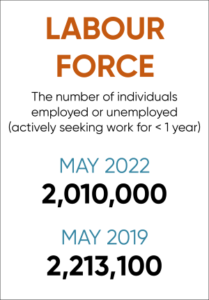
Overall, tourism employment grew (5.9%) over last month and the unemployment rate improved for all industry groups. There was also significant improvement in the unemployment rate across all industries when compared to the same month in 2019, 2020, and 2021. However, these data are artificially inflated by the decline in the overall size of the labour force from previous years.
A key observation this month is the positive growth in the May 2022 unemployment rate is deceptive. While the labour force continues to grow from its unprecedented lows during the COVID-19 pandemic, the total tourism labour force remains 203,000 workers short (or -9.2%) of the level it had in May 2019. Between April and May 2022, the size of the total tourism labour force grew by 4.6% (88,400 workers), but two industry groups—transportation and travel services—instead saw a decreased labour force this month: -1.6% (-5,600 workers) and -1.4% (-500 workers), respectively. This points to a significant labour shortage in the sector at a time when many of its industries are gearing up for a peak economic season.
Tourism Labour Force Grew by 4.6% in May 2022
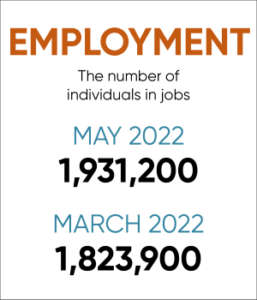
Labour Force Survey data[1] released for May 2022 reveals that, at 2,010,000 workers, Canada’s tourism labour force[2] increased by 4.6% (88,400 workers) from last month and has seen a significant gain from May 2021—up 16.8% (or 288,600) from 1,721,400.[3]
While this is a very positive sign for the recovery of tourism’s labour force, the impacts of the COVID-19 pandemic persist as the tourism labour force remains 203,000 workers short of the sizeable pre-pandemic total of 2,213,000 from May 2019. Though positive changes in the monthly unemployment rate and employment gains in the accommodations, food and beverage services, and recreation and entertainment industries are evident this month, as the tourism sector looks toward recovery, the size of the labour force continues to be much smaller than the demand from employers.
In summary: a significant labour shortage remains at a time when many tourism industry groups are gearing up for a peak economic season.
May 2022 Tourism Employment = 9.7% of Canadian Workforce
With a total of 1,931,200 workers, tourism comprised 9.7% of total Canadian employment (19,836,400) for May 2022. Employment numbers have seen significant positive change for all industries this month, climbing by 5.9% or 107,300 workers from April (1,823,900). The most significant employment gains were in the accommodations and recreation and entertainment industries. Looking at the same month in previous years reveals that employment in the tourism sector has grown since May 2021 (up 24.4% overall) but continues to lag the levels seen pre-pandemic in May 2019 (-7.6%).
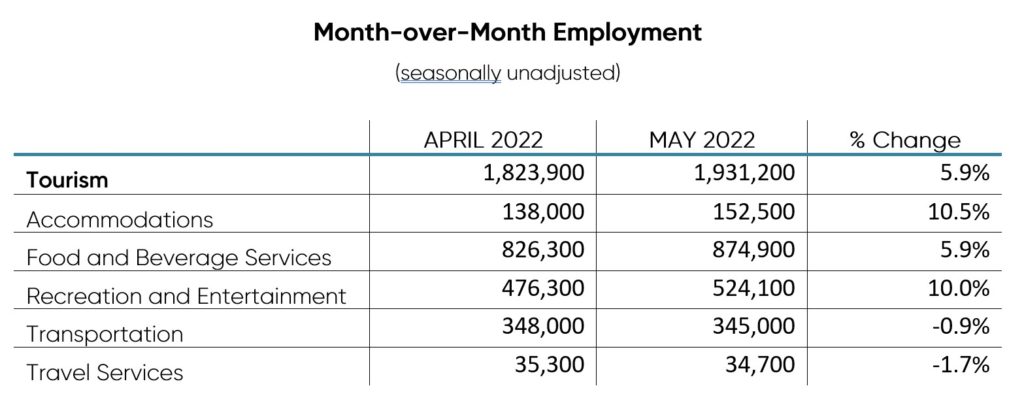
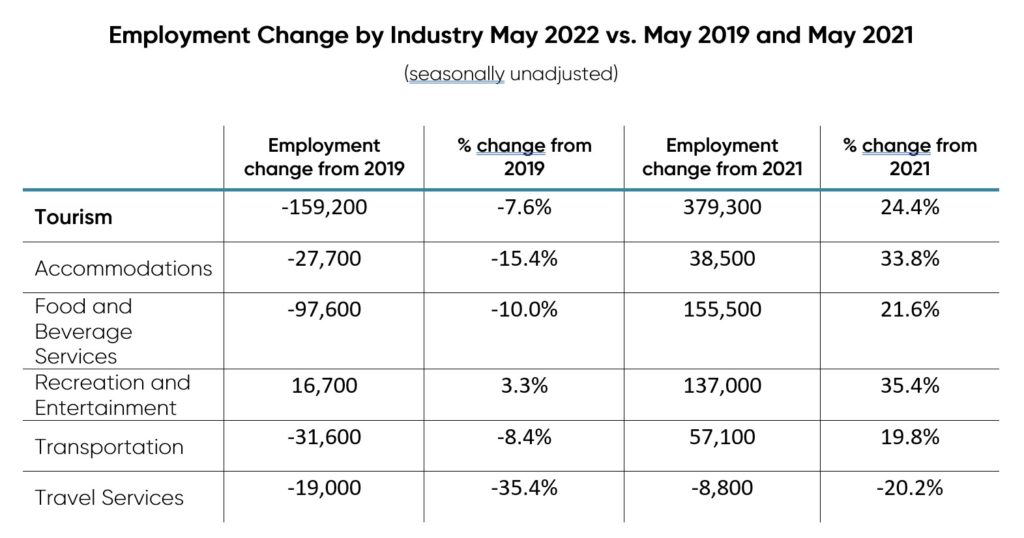
May 2022 Tourism Unemployment Rate = 3.9%
In May 2022, the unemployment rate in the tourism sector was at 3.9%, which is lower than the rate reported in May 2021 (5.9%) and lower than the previous month (April 2022) when the unemployment rate stood at 5.1%.
At 3.9%, tourism’s unemployment rate was well below Canada’s seasonally unadjusted unemployment rate of 5.1%. All tourism industry groups have reported lower unemployment rates than the same month last year.
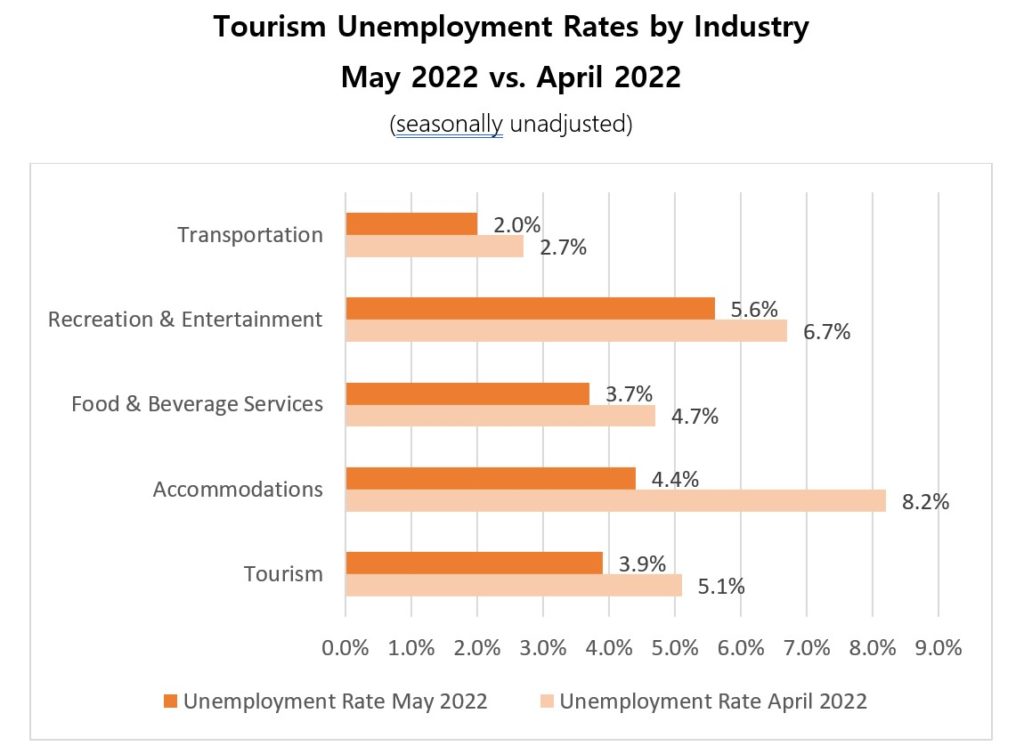
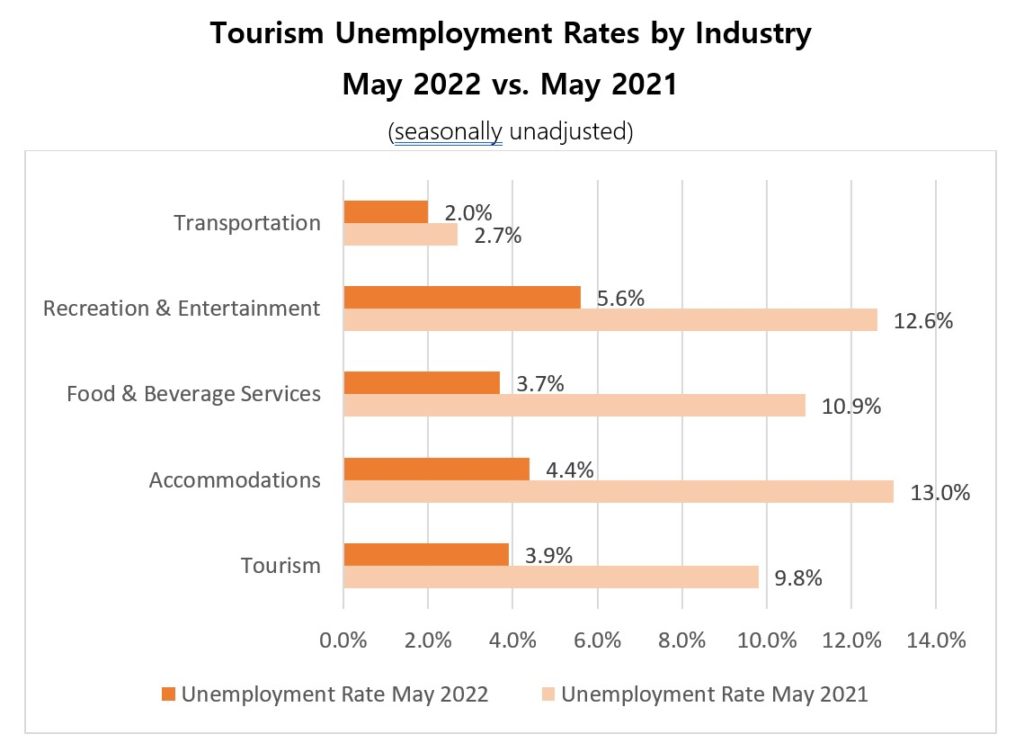
On a provincial basis, tourism unemployment rates ranged from 3.3% in British Columbia to 13.3% in Prince Edward Island. The seasonally unadjusted unemployment rates for tourism in each province, with the exceptions of Prince Edward Island, Nova Scotia, and Saskatchewan, were below the rates reported for the provincial economy.
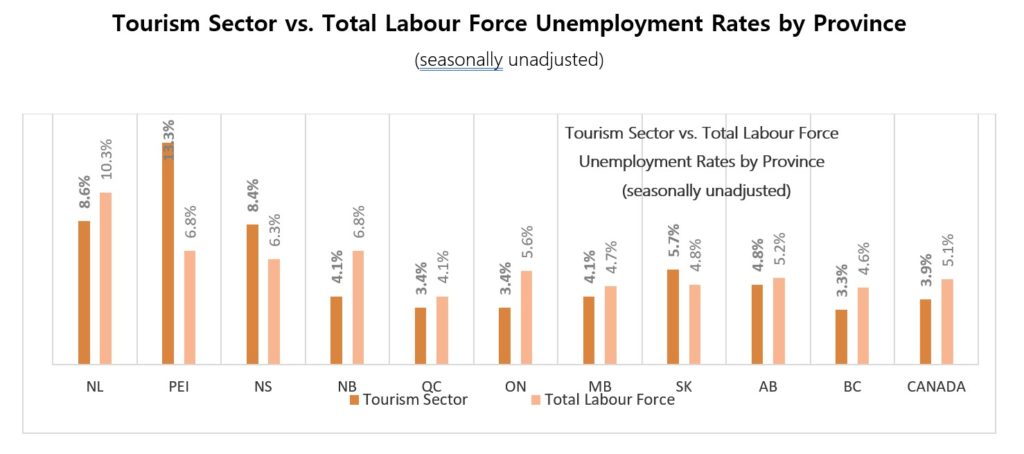
The overall employment increase in May is due to increases in full-time employment. Part-time employment in the tourism sector declined sharply (-13,900) while full-time employment increased by 121,200 workers.
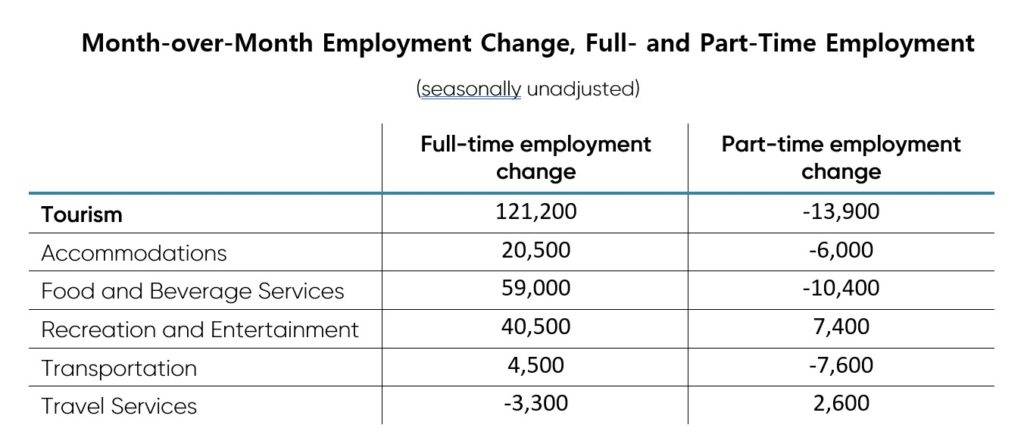
For a full look at the latest tourism workforce trends, please visit the Tourism Employment Tracker.
[1] SOURCE: Statistics Canada Labour Force Survey, customized tabulations. Based on seasonally unadjusted data collected for the period of May to 21, 2022.
[2] The labour force comprises the total of number of individuals who reported being employed and unemployed (but actively looking for work) in the tourism industries.
[3] As defined by the Canadian Tourism Satellite Account. The NAICS industries included in the tourism sector are those that would cease to exist or operate at a significantly reduced level of activity as a direct result of an absence of tourism.
